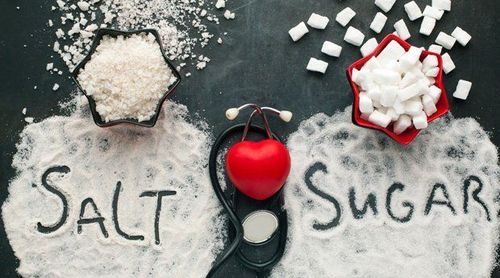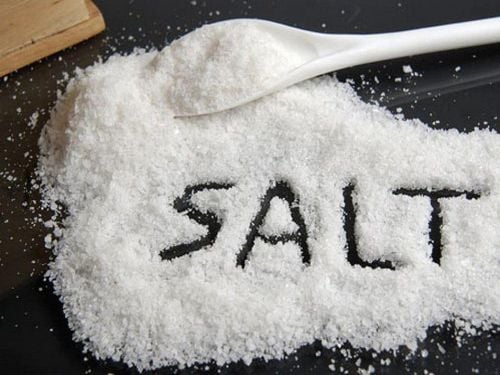This is an automatically translated article.
Most of us know that eating too much sodium is unhealthy, but we often think that this is something we should be more concerned about as we get older. However, this is not true, eating too much salt in childhood raises blood pressure in adulthood, or increases the risk of heart disease and stroke. Therefore, we should reduce salt intake at all ages..
1. The relationship between salt and health
Salt is a chemical compound made up of sodium and chloride. It is used to preserve and flavor foods and is also the main source of sodium in the daily diet. Small amounts of salt are important for good health because the sodium present in it controls many of our bodily functions. But using too much salt brings harmful risks to everyone's health.
Sodium in salt can be a risk factor for your health. Too much sodium can lead to high blood pressure or hypertension. High blood pressure increases the risk of stroke, heart attack and kidney failure. It can also cause ankle swelling and too much fluid in the body in some people.
Need for sodium: in the diet should not have more than 2300 mg of sodium per day. This content is equivalent to 6 g of salt and about a little more than a teaspoon of fine salt. For good health, you only need 460 to 920 mg of sodium per day, less than half a teaspoon of refined salt.
Much of the sodium we eat is hidden, with 75% coming from processed and packaged foods. The salt you add while cooking and on the table shouldn't be a major issue as it only provides about 15% of the sodium we eat. The remaining 10% is fresh vegetables, milk, fresh fish, chicken, meat and eggs.
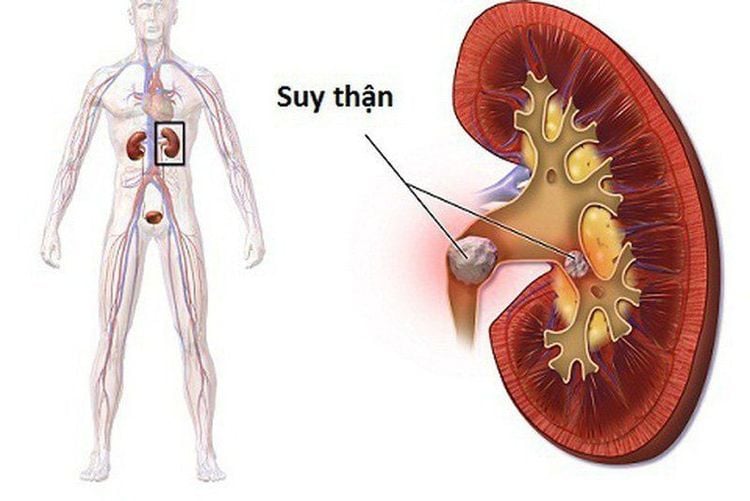
Lạm dụng muối quá nhiều có thể gây suy thận
The Food and Drug Administration (FDA) requires foods labeled as low in sodium to contain less than 140 mg per serving. However, in foods where salt is an important ingredient, such as soy sauce or cold cuts, the manufacturer may best label it as reduced sodium. In this case, the label may say less sodium or lower sodium content. Although, these foods can still be high-sodium foods. For example, one tablespoon of low-sodium soy sauce contains about 550 mg, compared with 1,000 mg in the regular version. A serving of lower sodium cold-sliced turkey breast contains about 380 mg, and this is not much different from 450 mg in regular cold-sliced turkey.
2. How to reduce salt absorption
2.1. Cut down on salt from a very early age
High blood pressure may begin to develop in childhood and it may become appropriate for highly salty foods early in life. This can make it more difficult to cut back on salt later on. Childhood is an important time to focus on preventing the development of high blood pressure, but cutting back on salt and sodium intake can have a significant impact on people of all ages.
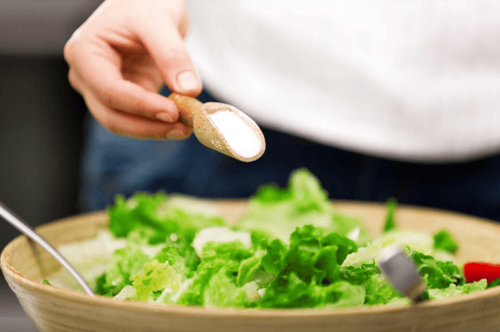
Giảm thiểu lượng muối trong khẩu phần ăn càng sớm càng tốt
2.2. Cut down on processed foods
About 70% of the sodium Americans eat comes from processed foods, such as crackers, cheese and canned foods, and restaurant meals.
Even processed foods that don't taste salty like breakfast cereals... can be surprisingly high in sodium. In addition, foods that are consumed several times a day, such as bread, can lead to higher sodium intake even though a single serving is not high in sodium.
According to the Centers for Disease Control and Prevention (CDC), the top food sources of sodium in the American diet include: breads and rolls, cold and frozen meats, pizza, meats Fresh and prepared chicken, soups, sandwiches, cheeses, egg dishes and packaged savory snacks. Processed sauces, salad dressings, and gravies also tend to be high in sodium.
Choosing foods with lower sodium does not mean losing flavor. Human taste buds aren't sensitive enough to notice a slight reduction in salt intake of about 30%, and for many foods, reducing salt intake by up to 30% will not taste appreciably different. This means that home cooks, professional chefs and the food industry can significantly reduce sodium intake with minimal impact on flavor.
2.3. Eat small portions of salty foods
There is no need to completely eliminate high sodium favorites or traditional cultural foods such as soy sauce (China), pickles and fish (Japan), salty cheese and olives ( Greece, Italy). Instead, it's best to enjoy such foods in smaller amounts.
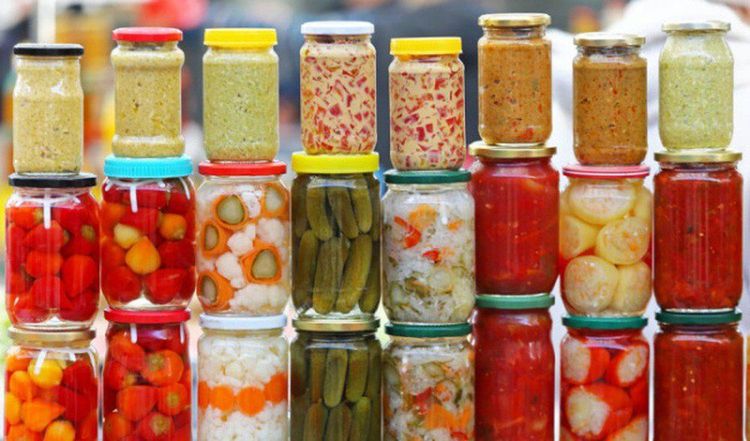
Đối với thực phẩm dưa muốn nên ăn các phần ăn nhỏ
2.4. Explore alternatives to reduced or no sodium
Salt substitutes include herbs and spices, and citrus like lemons can provide more flavor with less sodium. For example, citrus and sodium activate the same taste sensors so that less sodium can be used when they are combined. Explore your supermarket for low-sodium versions of traditional products that are high in salt, or experiment with new alternatives.
Sodium-free substitutes contain 100% potassium chloride, while lite salts replace up to half of table salt with potassium chloride. Potassium chloride also known as potassium salt tastes almost like sodium chloride, but it has a bitter aftertaste when heated so it is not recommended for cooking. However, check with your doctor before trying potassium salts, as extra potassium can be dangerous for people who have trouble getting rid of excess or who are taking medication that can raise levels. potassium in the blood. This includes people with diabetes or kidney disease, people with blocked urine flow, or people who are taking potassium-sparing diuretics, ACE inhibitors, or angiotensin receptor blockers.
2.5. Observe food product labels
Use nutrition facts labels as your tool to make informed choice decisions.
Know the daily nutritional value. The Daily Nutrient Value is a nutrient reference amount to consume or not exceed per day. The daily value for sodium is less than 2,300 milligrams per day. Use %daily value (%DV) as the tool. %DV is the percent of the daily value for each nutrient in a serving of food and indicates the amount of the nutrient in the total daily intake. Use %DV to determine if a serving of food is high or low in sodium and to compare and select foods with less than 100% of the DV sodium per day. As a general guide: 5% DV or less of sodium per serving is considered low, and 20% or more of sodium per serving is considered high. Nutritional information is usually based on one serving of food. Check serving sizes and how many servings you eat or drink to determine how much sodium you're consuming.
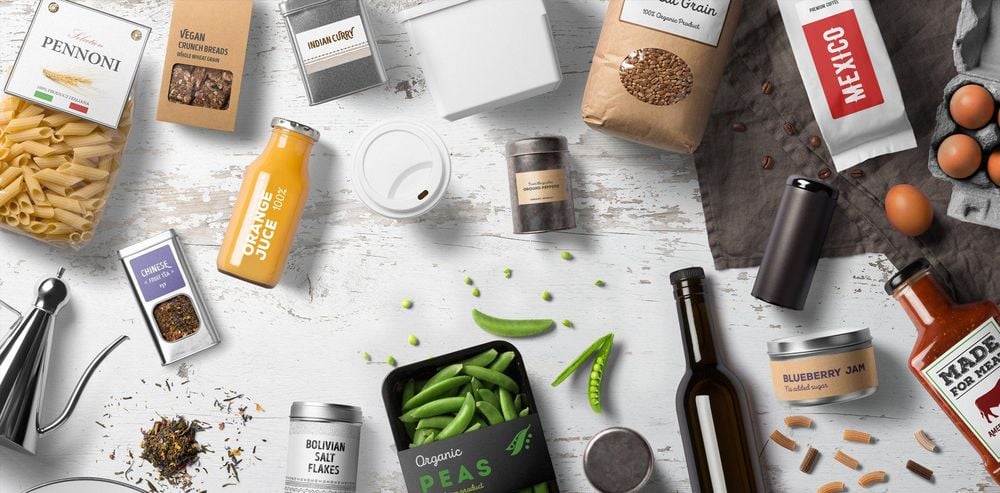
Luôn để ý kỹ lưỡng nhãn dán bao bì để kiểm soát lượng muối tiêu thụ
2.6. Cooking at home
Instead of eating processed foods and restaurant meals, focus on cooking with fresh ingredients. Cooking with fresh, unprocessed ingredients allows you to control how much salt (if any) you decide to add to your meal be it savory or bland.
Please dial HOTLINE for more information or register for an appointment HERE. Download MyVinmec app to make appointments faster and to manage your bookings easily.
Reference source: hsph.harvard.edu




